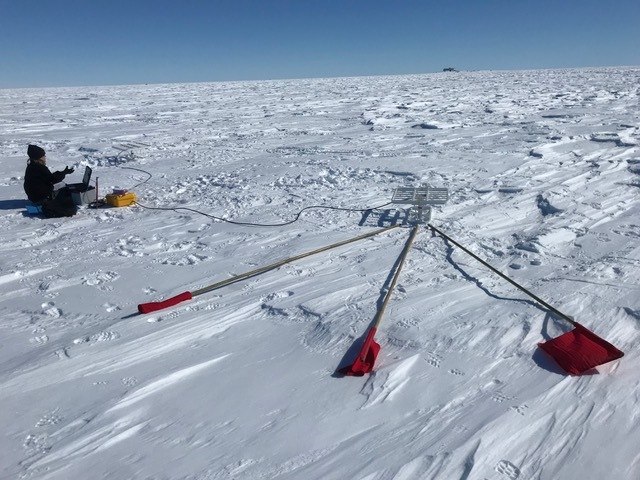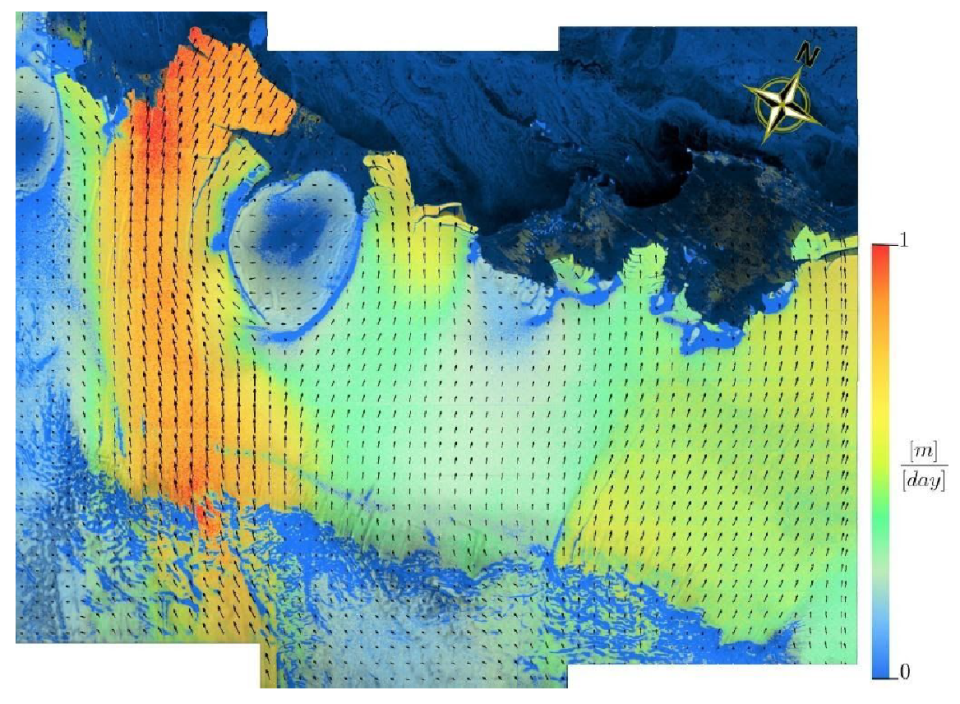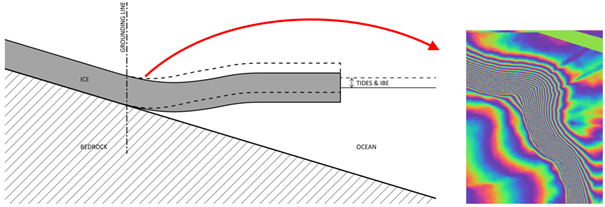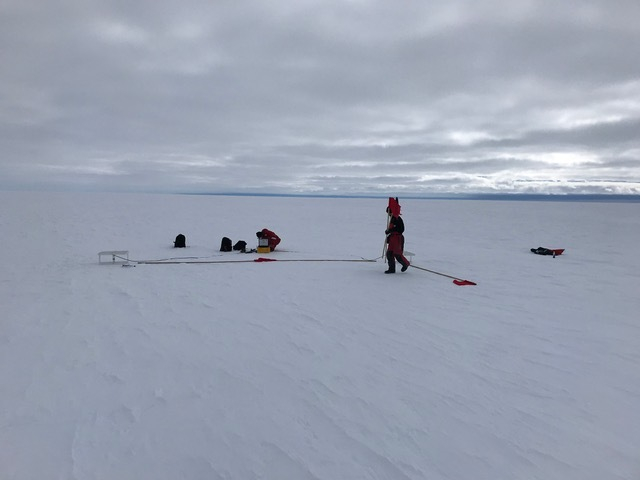Context and objectives
Ice shelves – the floating extensions of ice sheets - play a crucial role in controlling the present-day mass loss of the Antarctic ice sheet. Basically, ice shelves act as a cork on a bottle and restrain the inland ice through what is known as buttressing. Ice-shelf change is particularly pronounced in West Antarctica in response to increased oceanic heat transport beneath its floating ice shelf and resulting feedbacks, but evidence from around Antarctica confirms that the effect is not geographically limited. Ice-shelf thinning causes an instantaneous acceleration and a retreat of the grounding-line (limit between the grounded ice sheet and the floating ice shelf), hence a rise in sea level, which has major consequences for society.
Only a few studies have been focused on the spatial pattern of sub-shelf melt, which requires high-resolution interferometrically-determined ice flow velocities and surface elevation and changes herein. Their application therefore remains limited to specific ice shelves or ice shelf sections for a particular snapshot in time, which is not useful for wider mapping, monitoring and impact assessment, which is addressed in MIMO. The main objective of MIMO is therefore to quantify basal melt of ice shelves surrounding the Antarctic ice sheet at high spatial and temporal resolution to derive improved parametrizations for use in ice sheet modelling studies.
Project outcome
Scientific results
Within MIMO, we made direct observations of sub-shelf melt rates, bathymetry and ocean properties (temperature, salinity) on two ice shelves in Dronning Maud Land. We developed novel methods to derive high-resolution maps of ice shelf velocity based on Sentinel SAR interferometry and corrections for inverse barometer and tide effects. We derived sub-shelf melt rates for the Roi Baudouin ice shelf that could be directly compared to observations and extended this across the ice shelves of the whole Dronning Maud Land. We used the derived melt rates to validate and tune sub-shelf melt parameterizations and used these for projections of Antarctic ice sheet mass changes within the Ice Sheet Model Intercomparison Project ISMIP6. Besides sub-shelf melting, we investigated the use of SAR for quantifying surface melt on ice shelves, which has a major impact on changes in ice shelf rheology and stability, as it may facilitate ice shelf breakup. Therefore, the combined impact of sub-shelf melt and ice-shelf damage on the stability of grounding lines of glaciers in the Amundsen Sea area has been investigated.
Societal (including environmental) relevance
Sea-level rise (SLR) is one of the most damaging impacts of climate change, threatening the economy, ecology, and entire existence of coastal regions worldwide. The land ice contribution to SLR is accelerating, and future SLR is set to become dominated by the highly uncertain behaviour of the Antarctic ice sheet. MIMO addresses major bottlenecks in understanding how parts of the Antarctic ice sheet are melted, which may lead to regional instabilities of the ice sheet and accelerated sea level rise.
Products and services
The CSL InSAR Suite has been modified with regards to MIMO objectives. The CIS Coherence Tracking module has been adapted to TOPSAR acquisition mode to new ALOS PALSAR 2 data. In addition, the Centre Spatial de Liège has developed modifications to the open-access SentiNel Application Platform for the azimuthal displacement component estimation on TOPSAR bursts superposition areas.
Potential users
Climate scientists, polar researchers, mapping, ice sheet model projections of sea-level change.
Outreach
Satellite data over Antarctica predict global climate change
Suivre le changement global en Antarctique grâce aux satellites
Satellietbeelden over Antartica voorspellen wereldwijde klimaatverandering
| Project leader(s): | ULB - Laboratoire de Glaciologie | |||
| Belgian partner(s) |
|
|||
| International partner(s) |
|
|||
| Location: |
Continent:
|
|||
| Related presentations: | ||||
| Website: | https://www.csl.uliege.be/cms/c_14624268/en/remote-sensing-of-the-earth-in-relation-with-south-pole-monitoring | |||




